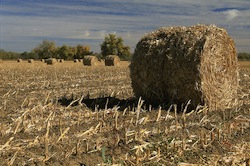 A two-year study has examined the environmental impacts of feedstocks used for biofuels. Minnesota Daily reports researchers from the University of Minnesota found that there are some fundamental differences between how the Environmental Protection Agency, the Department of Energy and the Department of Agriculture, look at biofuel production.
A two-year study has examined the environmental impacts of feedstocks used for biofuels. Minnesota Daily reports researchers from the University of Minnesota found that there are some fundamental differences between how the Environmental Protection Agency, the Department of Energy and the Department of Agriculture, look at biofuel production.
All three agencies differed in crop location, which Hill said is an important clarification for researchers, policymakers and biofuel investors. If the researchers had not figured out there was this difference, other scientists might only use one agency’s predictions and their conclusions would be misled.
“Our group is looking at the environmental impacts of biofuels,” [bioproducts and biosystems engineering assistant professor Jason] Hill said. “We need to understand the future of what that’s going to look at.”
“It helps us tease out the benefits and negatives,” BBE graduate student Brian Krohn said. “Some of those … lead to a U.S. landscape that’s better for the environment, and some of that leads to landscapes that have a very high negative impact.”
The biggest concern in the study is the use of corn stover for biofuels. While it is possible to take just enough of the material off the fields to get a good amount of feedstock and leave enough for soil health, the researchers did worry too much would be removed.
“If corn stover becomes a significant player in ethanol,” BBE PhD student Tom Nickerson said, “Minnesota will have a pretty big role in producing ethanol for America.”
Balance is the key, with the researchers concluding that no pathway is perfect.

